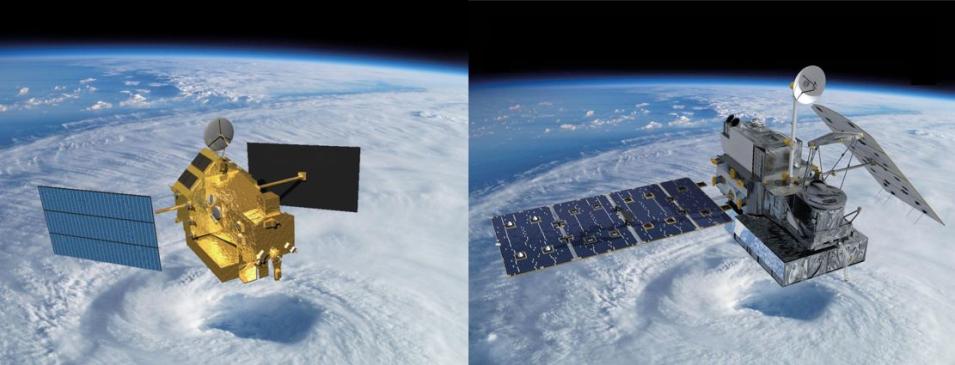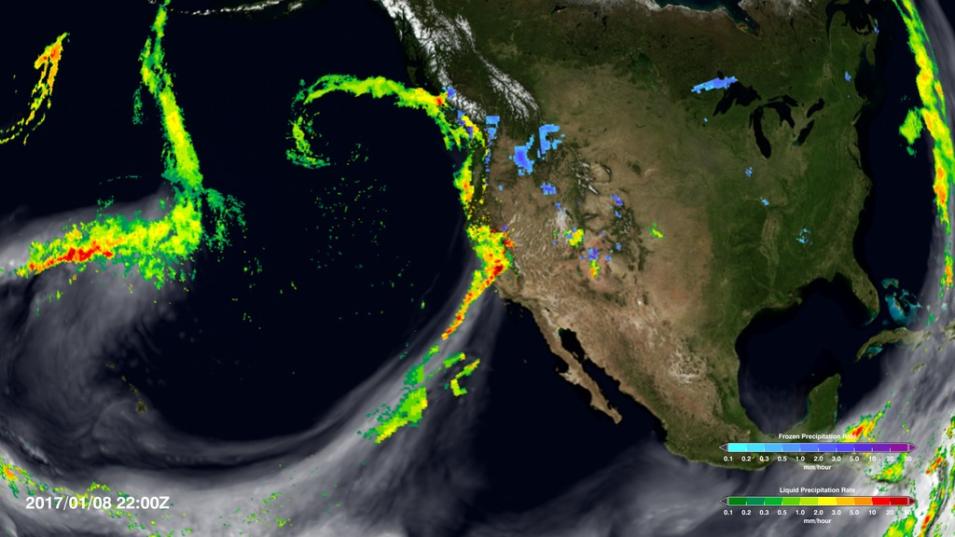Dr. Anna Wilson, Field Research Manager at the Center for Western Weather and Water Extremes, Scripps Institution of Oceanography, University of California San Diego
Research Interests: Developing accurate representations of atmospheric rivers and other extreme events in forecasts and projections to support science-based resource management strategies; identifying data gaps to support operational numerical weather prediction needs, both for situational awareness and for assimilation into model runs; and improving the understanding of the physical processes extreme weather events to accurately predict hazards that impact life and property
Research Highlights: Atmospheric rivers — flowing columns of water vapor that move through the atmosphere — are responsible for producing significant levels of rain and snow, especially in the western US, and are a key component of Earth’s water budget. When atmospheric rivers move inland and sweep over mountains, the water vapor they contain rises and then cools, creating heavy precipitation. These deluges account for a major portion of the precipitation over mid-latitude oceans and coastlines.
There are several meteorological conditions that contribute to the formation of atmospheric rivers, including high humidity levels, strong low-level winds, and a moist neutral atmospheric profile. Atmospheric rivers primarily occur during winter of the respective hemisphere (i.e., December, January, and February for the northern hemisphere and June, July, and August for the southern hemisphere), when extratropical cyclones are most prevalent. Further, the atmospheric rivers that cause significant precipitation and flooding are often those associated with stalled or slow-moving systems. In addition, the strength, frequency of occurrence, location, and precipitation production of these systems can vary based on existing climate patterns, such as the El Niño–Southern Oscillation.
Yet, despite all that is known about atmospheric rivers, forecasting their development and evolution can be a challenge, as they tend to form and propagate over the ocean where in situ and even airborne observations are limited. Weather satellites can help expand coverage of these areas, but even their instruments can be stymied by thick clouds and heavy precipitation. Therefore, if the scientific community’s forecasting of atmospheric rivers is to improve, so too must the methodologies and observations used to predict them.
Among the scientists working to make these improvements a reality is Dr. Anna Wilson, Field Research Manager at the Scripps Institution of Oceanography’s Center for Western Weather and Water Extremes. Located at the University of California–San Diego, the Center’s mission is to provide the latest science and technology to address the effects of extreme weather on the environment, population, infrastructure, and economy of Western North America. It is here that Wilson and her colleagues conduct research to enhance the observation, understanding, and prediction of extreme weather events, including atmospheric rivers and other phenomena, in the region.
“My current work focuses on identifying monitoring gaps to support operational numerical weather prediction needs, both for situational awareness and for assimilation into model runs,” said Wilson. “It also focuses on improving understanding of physical processes that are essential to accurately predict hazards that impact life and property.”
In addition to her work with the Center for Western Weather and Water Extremes, Wilson is also a member of the User Working Group (UWG) of NASA’s Global Hydrometeorology Resource Center Distributed Active Archive Center’s (GHRC DAAC). A joint venture of NASA's Marshall Space Flight Center and the University of Alabama–Huntsville’s Information Technology and Systems Center, GHRC DAAC ingests, processes, archives, and distributes satellite, airborne, and in-situ data products pertaining to lightning, tropical cyclones, and storm-induced hazards in NASA’s Earth Observing System Data and Information System (EOSDIS) collection. These data are crucial to the investigation, characterization, and monitoring of hazardous weather and the dynamical and physical processes that govern it.


